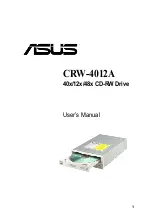
Functional Safety KCD2-SCD-Ex1.ES(.SP), HiC2031ES
Planning
20
20
-0
4
11
3.2
Assumptions
The following assumptions have been made during the FMEDA:
•
Failure rate based on the Siemens standard SN 29500.
•
Failure rates are constant, wear is not considered.
•
External power supply failure rates are not included.
•
The safety-related device is considered to be of type
A
device with a hardware fault
tolerance of
0
.
•
The device will be used under average industrial ambient conditions comparable
to the classification "stationary mounted" according to MIL-HDBK-217F.
Alternatively, operating stress conditions typical of an industrial field environment similar
to IEC/EN 60654-1 Class C with an average temperature over a long period of time
of 40
º
C may be assumed. For a higher average temperature of 60
º
C, the failure rates
must be multiplied by a factor of 2.5 based on experience. A similar factor must be used
if frequent temperature fluctuations are expected.
•
The application program in the programmable logic controller (PLC) is configured
to detect line faults (lead breakage or lead short circuit).
SIL 3 Application
•
To build a SIL safety loop for the defined SIL, it is assumed as an example that this device
uses 10 % of the available budget for PFD
avg
/PFH.
•
For a SIL 3 application operating in low demand mode the total PFD
avg
value
of the SIF (
S
afety
I
nstrumented
F
unction) should be smaller than 10
-3
,
hence the maximum allowable PFD
avg
value would then be 10
-4
.
•
For a SIL 3 application operating in high demand mode the total PFH value
of the SIF should be smaller than 10
-7
per hour, hence the maximum allowable PFH value
would then be 10
-8
per hour.
•
Since the safety loop has a hardware fault tolerance of
0
and it is a type
A
device,
the SFF must be > 90 % according to table 2 of IEC/EN 61508-2 for a SIL 3 (sub) system.








































